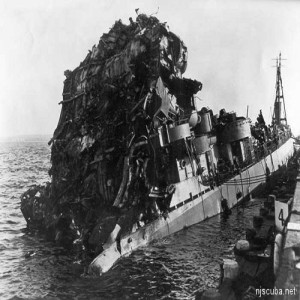

On this day in labor history, the year was 1950.
That was the day thirty-one dockworkers were killed and hundreds more injured in an explosion at the Raritan River Port in South Amboy, New Jersey.
Workers were loading ammunition from freight trains onto ships.
The freight’s ultimate destination was Pakistan.
Practically every structure in South Amboy suffered some form of serious or structural damage, with windows blown out everywhere, and debris reported as far as 25 miles away.
5800 more unexploded anti-personnel mines had been strewn about the port.
Demolition experts had to be called in for removal.
A subsequent fire at a nearby agricultural phosphorus plant complicated their work.
The blast was caused by the detonation of 150 tons of military explosives and gelatin dynamite.
The piers, equipment and railroad cars were all demolished, over a dozen nearby barges were either on fire or sank.
Emergency Operations went into effect and a state of emergency was declared.
Key industries in the immediate area were seriously damaged, including the International Smelting and Refining Company, Pennsylvania Railroad maintenance shops and the power plant for Jersey Power and Light.
According to a report by National Board of Fire Underwriters and the Fire Insurance Rating Organization of New Jersey, packing of the mines and fuses by the Kilgore Company was not in accordance with Army standards and labeling was confusing.
The shipped mines were labeled as M1A1 though all parts but the detonator were identical to M1 mines, discontinued by the army in 1942 for their apparent defective fuse, leading to accidental firing and explosions.
Their report refrained from drawing a certain cause or assigning blame.
Instead the underwriters offered a number of possible scenarios and recommendations for best practices to be implemented.
More Episodes
All Episodes>>You may also like
Create Your Podcast In Minutes
- Full-featured podcast site
- Unlimited storage and bandwidth
- Comprehensive podcast stats
- Distribute to Apple Podcasts, Spotify, and more
- Make money with your podcast











